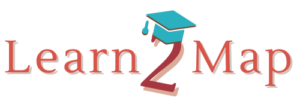Learning French opens doors to new cultures, global opportunities, and enriching personal experiences. Whether you’re aiming for fluency or just the basics, there are various methods to suit your needs. Each approach offers unique benefits, helping you progress effectively in mastering this beautiful language.
Immersive Learning: A Proven Path to Fluency
Immersion is one of the most effective methods for learning French. It surrounds learners with the language, offering consistent exposure and practical usage. Programmes like www.institutdefrancais.com are renowned for creating ideal environments to accelerate language acquisition.
Living the Language Daily
Immersive learning involves engaging with French speakers in everyday situations. Activities like shopping, dining, and attending local events offer natural opportunities to practise the language. This method allows learners to absorb vocabulary and phrases in context, making it easier to remember them.
Cultural Exposure and Understanding
Immersion goes beyond language. It introduces learners to French traditions, customs, and lifestyle, enriching their experience. By participating in cultural activities, learners gain a deeper connection to the language and its people.
Online Platforms and Apps for Learning French
In today’s digital age, learning French is easier than ever with the help of online tools. Websites, apps, and virtual classrooms offer flexible and accessible ways to learn from anywhere.

Interactive Apps for Beginners
Apps like Duolingo, Babbel, and Memrise are popular choices for learning French. They break lessons into manageable sections and use gamified techniques to keep learners motivated. These platforms are perfect for beginners aiming to build vocabulary and practise pronunciation.
Online Courses with Live Tutors
For a more personalised approach, many platforms connect learners with native French tutors. Websites like iTalki and Preply offer one-on-one sessions tailored to individual goals. Live interaction helps improve conversational skills and provides real-time feedback.
Classroom-Based Learning for Structure and Guidance
Traditional classroom learning remains a reliable method for those who prefer structured lessons and expert guidance. This approach is ideal for learners seeking a comprehensive understanding of grammar, pronunciation, and cultural nuances.
Group Classes for Collaboration
Group classes provide a social learning environment where students can practise French with peers. Collaborative exercises and group discussions enhance speaking skills and create a supportive atmosphere.
Tailored Programmes at Language Schools
Language schools, such as the Alliance Française, offer tailored courses for learners at all levels. These programmes often include cultural immersion components, blending traditional instruction with practical activities.
Combining Methods for Effective Progress
Each method of learning French has its strengths, but combining approaches can provide the best results. A blended learning strategy helps reinforce skills and keeps the process engaging.
Integrating Technology and Immersion
Using apps to build vocabulary before travelling to a French-speaking region enhances the immersion experience. Technology can complement real-world practice, helping learners feel more prepared to interact with native speakers.
Supplementing Classes with Independent Study
Traditional classes can be paired with self-study methods like reading French books or watching films. This reinforces classroom lessons while exposing learners to new words and expressions in different contexts.
Learning French is an exciting journey with multiple paths to success. Whether through immersion, digital tools, or classroom instruction, there’s a method to suit every learner’s needs.



